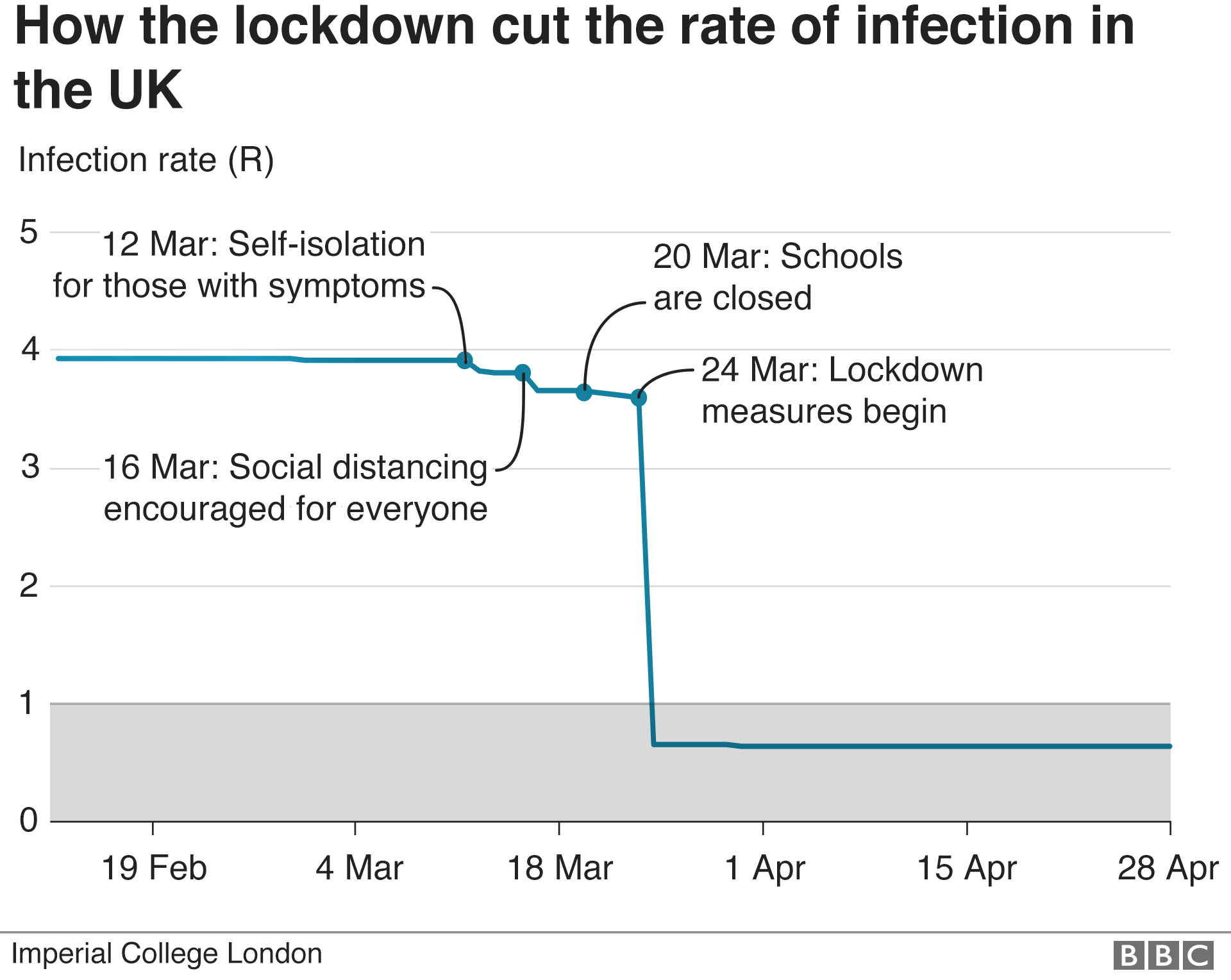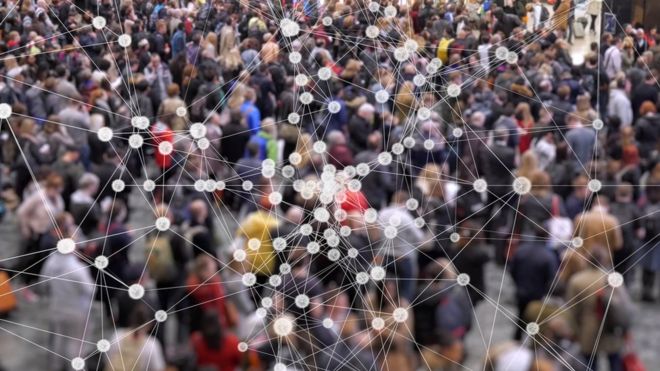There is a simple, but crucial number at the heart of understanding the threat posed by the coronavirus. It is guiding governments around the world on the actions they need to take to save lives and it gives us clues to the extent that lockdown can be lifted.
It is called the basic reproduction number or simply the R0 (pronounced R-nought).
What is an R0?
The reproduction number is a way of rating a disease's ability to spread.
It's the number of people that one infected person will pass the virus on to, on average, assuming that nobody is immune and people don't change their behaviour to avoid getting ill.
Measles has one of the highest numbers in town with a reproduction number of 15. It can cause explosive outbreaks.
The new coronavirus, known officially as Sars-CoV-2, has a reproduction number of about 3, but estimates vary.
Why is it important?
If the reproduction number is higher than one, then the number of cases increases exponentially - it snowballs like debt on an unpaid credit card.
But if the number is lower than one, the disease will eventually peter out as not enough new people are being infected to sustain the outbreak.

The goal of governments around the world has been to force the reproduction number down from around three to below one.
This is the reason you've not seen family, have had to work from home and the children have been off school. The main tool governments have used is to stop people coming into contact with each other to cut the ability of virus to spread.
What has happened in the UK?
The reproduction number is not fixed for all time, instead it changes as our behaviour changes or as immunity to the virus develops.
Mathematical modellers at Imperial College London are attempting to track how the number has changed as isolation, social distancing and the full lockdown were introduced.
Before any measures were introduced the number was well above one, the conditions were ripe for a large outbreak. Successive restrictions brought that figure down, but it was not until full lockdown that it was driven below that vital threshold of one.
It's a bit technical, but by this point scientists refer to the Rt, rather than the R0, as the number is changing over time.

The figure seems to be about 0.7. There is always some uncertainty in this type of work, but there is a high degree of confidence from government's scientific advisors that the figure is below one overall.
The situation is different in some hospitals and care homes where the virus is spreading.
So how does this inform lifting lockdown?
As countries think about how to lift lockdown, the aim will be to keep the reproduction number below one.
"The reproduction number will be an important consideration," Dr Adam Kucharski, from the London School of Hygiene and Tropical Medicine, told the BBC.
"There is risk you very quickly end up back in exponential territory, it's a big challenge making sure you're not loosening too much and increasing transmission."
However, there is an unwelcome fact in the reproduction number.
It has taken a monumental effort, that has caused damage to people's lives, to get the number from three to 0.7.
"It doesn't give you a lot of room to play with [to keep it below one]," Dr Kucharski added.
Earlier in April, Germany managed to get its reproduction number to about 0.7, the same as the UK's now.
The country's Robert Koch Institute said the number had increased in recent days to 1 before dropping back to 0.75.
"The number should stay below one, that is the big goal," said Prof Lothar Wieler, head of the RKI.
Which measures could be lifted?
Unfortunately there is not a manual that says definitively how much each intervention changes the ability of the virus to spread, although there are estimates.
"Lockdown introduced all these measures at once so we haven't got a really good sense of how much each one contributes to the reduction," said Dr Kucharski.
He added: "Opening schools versus workplaces versus other gatherings - understanding how much they increase the reproduction number is going to be the challenge."
Another issue is people's behaviour changes over time too, which means the number can creep up even if the lockdown policies stay the same.
What is likely to be needed are new ways of controlling the virus, such as more extensive testing and tracing or location-tracking apps.
These can suppress the reproduction number in a more targeted way, allowing some of the other measures to be lifted.
Is it the most important number?
The reproduction number is one of the big three.
Another is severity - if you have a very mild disease that does not cause many problems then you can relax a bit. Coronavirus, and the disease it causes Covid-19, is unfortunately severe and deadly.
The last is the number is the number of cases, which is important for deciding when to act. If you have a high number of cases, but ease restrictions so the reproduction number is around 1 then you will continue to have a high number of cases.
What about a vaccine?
Having a vaccine is another way of bring the reproduction number down.
A coronavirus patient would naturally infect three others on average, but if a vaccine could protect two of them from infection then the reproduction number would fall from three to one.
Latest Stories
-
Juliet Asante often disregarded Board decisions- NFA Board Member
14 minutes -
Mr. Ebenezer Kofi Bonney
42 minutes -
Cheef Chebe to release ‘Waka Waka’ on 6th March
44 minutes -
Eni Ghana, OCTP Partners, Vitol and GNPC, promote inclusive economic development in Western Region
45 minutes -
New BoG building: Johnson Asiama’s full speech before Parliament
47 minutes -
Ghana ranks low as economic transformer with a score of 19.1% – African Transformation Index
57 minutes -
Do business with SIC – Gov’t agencies and private firms advised
1 hour -
Establishing Ghana Gold Souq with a potential revenue over $10b per anum…… the visionary behind the initiative
1 hour -
FA wants Millwall keeper Liam Roberts’ ban extended
1 hour -
Noble Anthony Kwame de Youngster
1 hour -
Charterhouse announces Business Elevate Series with Gastro Festival
1 hour -
Ayariga demands more accountability after BoG explains cost of new HQ to Parliament
1 hour -
Galaxy International School celebrates global unity with 19th Inter-Cultural Festival
1 hour -
Westec Security Systems CEO, Mrs Esther Boakye honoured at 2025 Corporate Ghana Hall of Fame
1 hour -
Blackstar Experience will target youth empowerment
2 hours

